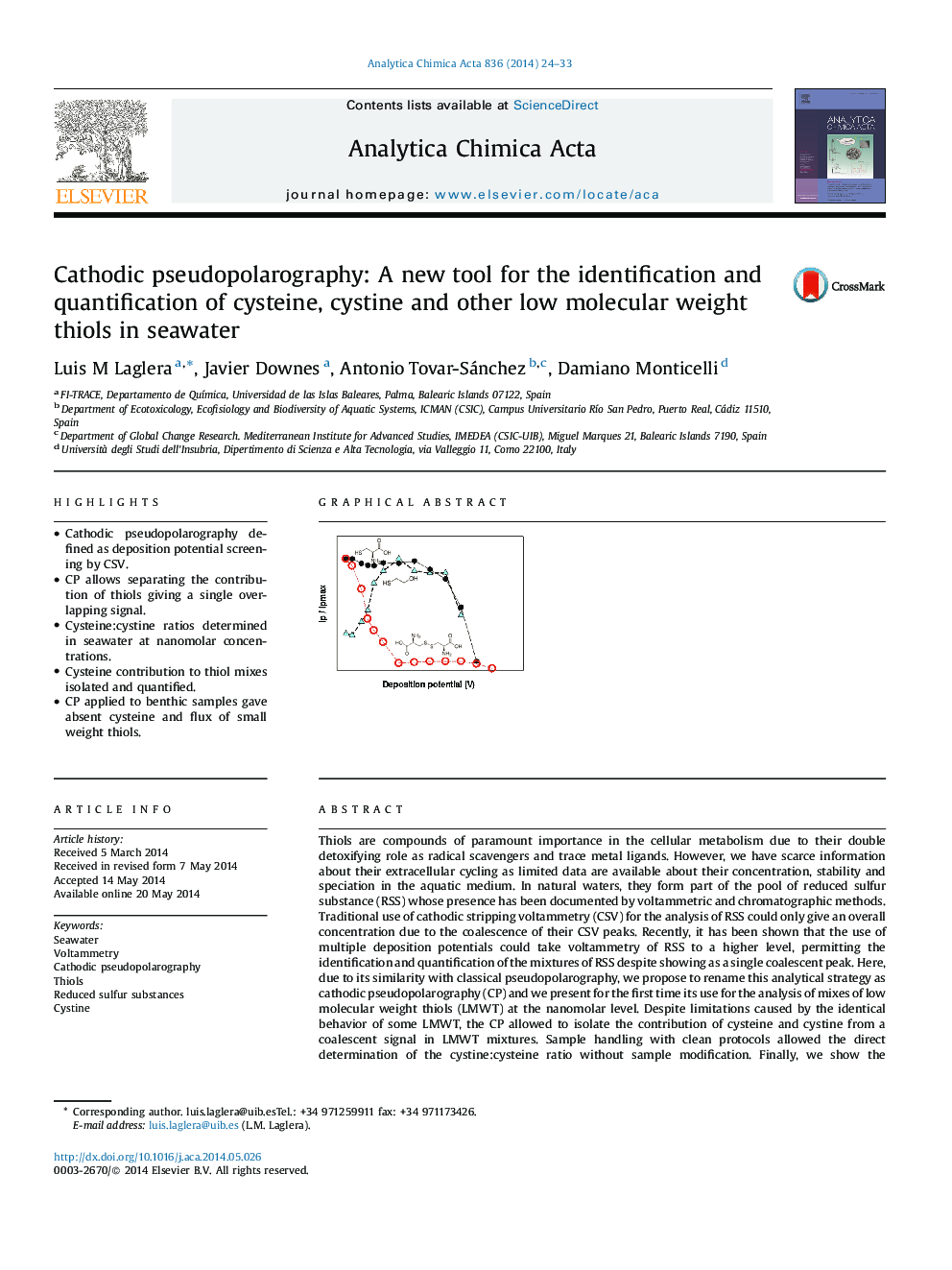| کد مقاله | کد نشریه | سال انتشار | مقاله انگلیسی | نسخه تمام متن |
|---|---|---|---|---|
| 1164288 | 1490996 | 2014 | 10 صفحه PDF | دانلود رایگان |

• Cathodic pseudopolarography defined as deposition potential screening by CSV.
• CP allows separating the contribution of thiols giving a single overlapping signal.
• Cysteine:cystine ratios determined in seawater at nanomolar concentrations.
• Cysteine contribution to thiol mixes isolated and quantified.
• CP applied to benthic samples gave absent cysteine and flux of small weight thiols.
Thiols are compounds of paramount importance in the cellular metabolism due to their double detoxifying role as radical scavengers and trace metal ligands. However, we have scarce information about their extracellular cycling as limited data are available about their concentration, stability and speciation in the aquatic medium. In natural waters, they form part of the pool of reduced sulfur substance (RSS) whose presence has been documented by voltammetric and chromatographic methods. Traditional use of cathodic stripping voltammetry (CSV) for the analysis of RSS could only give an overall concentration due to the coalescence of their CSV peaks. Recently, it has been shown that the use of multiple deposition potentials could take voltammetry of RSS to a higher level, permitting the identification and quantification of the mixtures of RSS despite showing as a single coalescent peak. Here, due to its similarity with classical pseudopolarography, we propose to rename this analytical strategy as cathodic pseudopolarography (CP) and we present for the first time its use for the analysis of mixes of low molecular weight thiols (LMWT) at the nanomolar level. Despite limitations caused by the identical behavior of some LMWT, the CP allowed to isolate the contribution of cysteine and cystine from a coalescent signal in LMWT mixtures. Sample handling with clean protocols allowed the direct determination of the cystine:cysteine ratio without sample modification. Finally, we show the application of CP to identify LMWT in seawater samples extracted from benthic chambers and suggest future applications in other areas of environmental electroanalysis.
Figure optionsDownload as PowerPoint slide
Journal: Analytica Chimica Acta - Volume 836, 11 July 2014, Pages 24–33